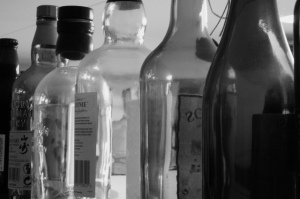The role of alcohol policy in prevention

Efforts to reduce alcohol consumption can be controversial when it comes to sexual violence prevention. So let me start with a few important points. Alcohol does not cause sexual violence. Alcohol is associated with some factors that can be associated with sexual violence perpetration, but alcohol consumption doesn’t lead to sexual violence in a vacuum. Alcohol may lower inhibitions, decrease empathy, and cause problems with judgment, but these things don’t lead to sexual violence in the absence of factors like sexual entitlement, sexual objectification, victim-blaming or rape-accepting attitudes, and a desire for power and control.
A new study came out that PreventConnect will soon be giving a web conference about. The study, by Lippy & DeGue, looks at the potential effects that alcohol-related policies can have on sexual violence perpetration. The article does an excellent job of contextualizing the role of alcohol policy by acknowledging and describing the limitations that I just mentioned. But it also makes a good public health case for focusing on how alcohol policy can help in prevention. It’s true that alcohol consumption isn’t a root cause of sexual violence perpetration, but it does have an impact on perpetration in many populations, including a wide range of ages and people in both different- and same-sex relationships. According to the article, alcohol consumption by the perpetrator, victim, or both is a factor in about half of all sexual assaults, and about one-third to three-fourths of perpetrators had been drinking at the time of the assault. So from a public health standpoint, it makes a lot of sense to attempt to reduce alcohol consumption as a sort of quicker fix to prevent perpetration. It won’t eradicate gender inequality, patriarchy, or sexual objectification or increase empathy and healthy relationships, but it might prevent some sexual assaults in the meantime. That makes it a potentially important part of a comprehensive approach to sexual violence prevention.
So what did the study find? As a review of many studies related to alcohol and sexual violence, the article mostly showed that there needs to be more research related specifically to alcohol policy’s effects on sexual violence, but it also highlighted some strategies that show promise.
- Increasing alcohol prices through higher taxes or through prohibiting drink specials and promotions shows consistent effects of reducing sexual violence perpetration. More research is needed on policies restricting or prohibiting happy hours, which may encourage binge drinking.
- Policies restricting the times when alcohol can be sold (like closing time laws) have mixed results in their effects on violence, but they have been shown to reduce alcohol consumption.
- Higher alcohol outlet density has been linked to higher rates of sexual violence victimization, as well as higher rates of assault and intimate partner violence. Alcohol outlet density is the number of outlets (businesses) that sell alcohol either in a certain geographic area or compared to the population (e.g. 3 outlets on a city block, 2 outlets per 100 people living in a city, etc.). Alcohol outlet density can be regulated using alcohol sale licensing policy.
- We need a lot more research on policies to reduce over-serving customers in bars or restaurants, but there’s some preliminary evidence that these types of policies can reduce assault and physical aggression.
- There’s no good evidence on policies regarding placement or content of alcohol marketing, but there is evidence that being exposed to sexist alcohol marketing is related to sexual violence perpetration.
- Policies banning alcohol on college campuses or in specific residence halls are associated with reduced sexual violence victimization. But this effect depends on the availability of alcohol in the community surrounding a campus, so policies that affect both colleges and their communities should be considered.
Creating changes at the societal level to prevent sexual violence is notoriously difficult to do, and we have very little evidence for what kinds of societal-level efforts can actually reduce sexual violence perpetration. Alcohol-related policies may not address the causes of sexual violence perpetration, but it looks like they can still reduce sexual violence rates. It’s a part of the solution that definitely needs to be explored further.
Full citation: Lippy, C. & DeGue, S. (2014). Exploring alcohol policy approaches to prevent sexual violence perpetration. Trauma, Violence, & Abuse. Advance online publication. doi: 10.1177/1524838014557291
Link: http://www.ncbi.nlm.nih.gov/pubmed/25403447
Full abstract:
“Sexual violence continues to be a significant public health problem worldwide with serious consequences for individuals and communities. The implementation of prevention strategies that address risk and protective factors for sexual violence at the community level are important components of a comprehensive approach, but few such strategies have been identified or evaluated. The current review explores one potential opportunity for preventing sexual violence perpetration at the community level: alcohol policy. Alcohol policy has the potential to impact sexual violence perpetration through the direct effects of excessive alcohol consumption on behavior or through the impact of alcohol and alcohol outlets on social organization within communities. Policies affecting alcohol pricing, sale time, outlet density, drinking environment, marketing, and college environment are reviewed to identify existing evidence of impact on rates of sexual violence or related outcomes, including risk factors and related health behaviors. Several policy areas with initial evidence of an association with sexual violence outcomes were identified, including policies affecting alcohol pricing, alcohol outlet density, barroom management, sexist content in alcohol marketing, and policies banning alcohol on campus and in substance-free dorms. We identify other policy areas with evidence of an impact on related outcomes and risk factors that may also hold potential as a preventative approach for sexual violence perpetration. Evidence from the current review suggests that alcohol policy may represent one promising avenue for the prevention of sexual violence perpetration at the community level, but additional research is needed to directly examine effects on sexual violence outcomes.”
